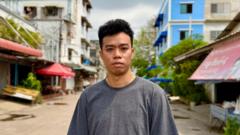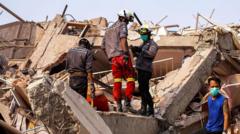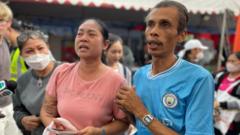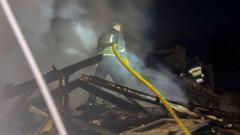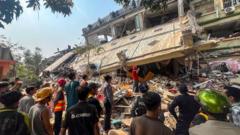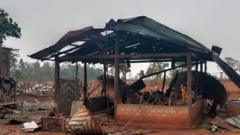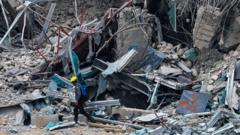The earthquake that struck near Mandalay, Myanmar on March 28, 2025, has led to an official death toll exceeding 1,600 people, with urgent calls for aid as rescue teams search for survivors. Volunteer emergency workers are laboring under difficult conditions, navigating through the wreckage of collapsed structures, while the military junta imposes tight restrictions on information flow. Observers note that the death count could rise dramatically, with estimates suggesting it may surpass 10,000 based on geological modeling. This catastrophic event has further exacerbated the already critical humanitarian crisis, as nearly 20 million individuals were reportedly without adequate food or shelter even prior to the earthquake, in the context of ongoing civil conflict following the military coup in 2021.
Myanmar Earthquake Death Toll Exceeds 1,600 as Rescue Operations Continue

Myanmar Earthquake Death Toll Exceeds 1,600 as Rescue Operations Continue
A powerful earthquake in Myanmar creates significant humanitarian challenges, with ongoing rescue efforts limited by military control and civil unrest.
Rescue operations are hindered by multiple factors, including a lack of equipment, the presence of civil strife, and the junta's strict oversight. Volunteer Thaw Zin expressed the urgency of the situation as he reported that many individuals remained trapped beneath the rubble, emphasizing their limited resources in an increasingly desperate humanitarian landscape. Although aid shipments are beginning to arrive, the complexities of navigating a disaster-stricken region steeped in conflict pose significant challenges.
As the earthquake's aftermath reveals deeper societal fractures, analysts are raising questions about the military regime's capability to maintain governance in light of the disaster and ongoing rebellion, potentially reshaping the dynamics of power in Myanmar amidst burgeoning calls for international assistance.
This situation continues to evolve, and the challenges of delivering aid effectively remain at the forefront as those affected struggle to find safety, shelter, and necessary resources in a landscape rife with uncertainty.
As the earthquake's aftermath reveals deeper societal fractures, analysts are raising questions about the military regime's capability to maintain governance in light of the disaster and ongoing rebellion, potentially reshaping the dynamics of power in Myanmar amidst burgeoning calls for international assistance.
This situation continues to evolve, and the challenges of delivering aid effectively remain at the forefront as those affected struggle to find safety, shelter, and necessary resources in a landscape rife with uncertainty.




